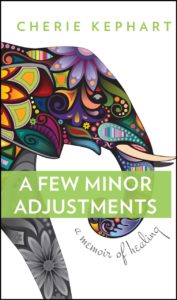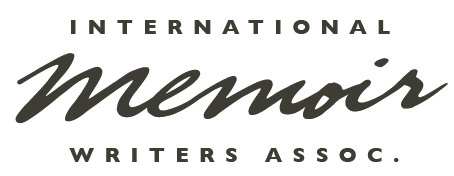 Writing a memoir is a journey beyond words. It’s about making a connection with readers, but also about healing. It’s a restorative and soulful experience. By crafting a memoir, we learn how our experiences have shaped us, and we make a conscious choice to share this found wisdom with our readers. Memoir writing then becomes a healing experience that is a shared discovery.
Writing a memoir is a journey beyond words. It’s about making a connection with readers, but also about healing. It’s a restorative and soulful experience. By crafting a memoir, we learn how our experiences have shaped us, and we make a conscious choice to share this found wisdom with our readers. Memoir writing then becomes a healing experience that is a shared discovery.
Often people ask me how I handled writing about such personal topics as I did in my memoir. Most memoirists, at one time or another, feel frozen, attempting to write about the deepest and most sacred parts of their lives. How do they deal with these foreboding and overwhelming feelings? And does it change over time?
There is not one way to write a memoir, or one way to heal. There are multiple paths. Discovering what works best for you is important. In my case, I felt paralyzed while creating the beginning scenes in my memoir that dealt with the two times I almost died. I had never experienced writer’s block until I tried to write those scenes. Tears flowed instead of words. It felt too personal, and it was obvious I still had scars from those events. I struggled for months while the blank page haunted me. But I didn’t give up. Instead, I went deep within and asked for answers. One morning while meditating about it, I had the inspiration to write under a pseudonym. It was like a new open road I had just discovered. I made a fun event out of creating a name. I soon became Maya James. The streams pouring out of me were no longer tears, they were words. I could write about Maya, and it felt safe. I ended up writing my entire book under that name. I felt lighter, more connected to the story, and proud to help “Maya” with her journey. I could give to her better than I could to myself.
Here’s the twist. I didn’t keep the name Maya.
I was at my monthly writing group and I asked what they thought about me writing and publishing under this different name. At first, there was silence. I felt an eerie sensation, like everyone had something to say about it, but no one was willing to tell me the truth I needed to hear. One of my dear friends, a brilliant writer and editor, broke the silence. “Cherie, after all the horrible stuff you’ve gone through with so much courage for so many years, you’re afraid to put your name on a book?” Without words, the rest of the group agreed.
I went home that night and used the Find and Replace Tool like never before. I let go of the fear of speaking my truth, and embraced that people would read my story, my mistakes, my pain, and my struggles. It became a defining moment in my writing career, and life. Could I have started writing with my real name? No. I needed Maya to help me graduate to that space of comfort with my story and the gifts I was giving to myself and eventually to the world.
So what’s the bigger picture to writing a memoir? It’s not about names. Those are irrelevant. Each writer has to choose whether writing under a pseudonym is right or not. For me, it was a ladder to reach new heights. For others, it may be the only way their beautiful stories find their way into the hands of interested readers. And then there are those courageous souls who are proud to use their name from day one. Whatever the case, the essence of the story is what matters. Memoirs are about exposing both the dark and light of our lives, creating a profound conversation connecting our humanity.
We heal when we write memoir by owning our experiences and releasing them, not by being attached to our stories. It’s a sensitive arena, and sometimes difficult to navigate. Ultimately, it’s about relinquishing the power your story has over you. By learning to let go of the story that is holding you back, you can craft the story you were meant to tell.
Ask yourself: What fears are blocking you? Do you fear rejection? Do you feel unworthy to write about your life? Do you worry that you are not good enough? Do you feel scared to reveal some unknown part of yourself? Do you fear you will be wrongly judged or criticized? Are you afraid to unleash some of the traumatic events you have endured?
Here’s a secret. I have felt all of these fears, and more. Again, writing, like healing, is a diverse process, unique to each person. I combatted many of these fears by doing the actual writing and working through the blocks that were trying to hold me back. I also employed many mindfulness techniques such as: journaling, meditating, visualizing, mantras, and talking about my fears with a loved one.
Once you make the decision to write about your life, you have realized, consciously or not, that you have a message. You have a voice, ideas, thoughts, and a story, and you want to share it. So, it’s time to sit down with your fears and ask them what they want. Be willing to listen for the answers. And be patient. It can take time. Also, don’t forget to thank your fears for how they have helped you, since fears do help us survive. Once you feel ready, let go of fears that no longer serve you, and start writing!
Through the craft of writing memoir, we evolve in our journey beyond what existed when we first embarked on this worthy, literary endeavor. I encourage you to enter the unwritten and to write from a healing vantage point—healing for you, and for the world. It will be a transformative experience. It has been for me!
—0—
 Cherie Kephart is a writer, editor, and poet, and holds an M.A. in Medical and Cultural Anthropology from the University of Auckland, New Zealand. Her memoir, A Few Minor Adjustments, is a 2017 San Diego Book Awards winner. It was also featured in the first San Diego Annual Memoir Showcase. Cherie’s essays, stories, and poems have appeared in publications and events such as: The San Diego Poetry Annual, The San Diego Writers Ink Anthology, and the Oceanside Literary Art Walk. Cherie lives in San Diego and has been celebrated for her holistic approach to healing, and her willingness to examine her life lessons in her writing. Stay connected with Cherie at: CherieKephart.com
Cherie Kephart is a writer, editor, and poet, and holds an M.A. in Medical and Cultural Anthropology from the University of Auckland, New Zealand. Her memoir, A Few Minor Adjustments, is a 2017 San Diego Book Awards winner. It was also featured in the first San Diego Annual Memoir Showcase. Cherie’s essays, stories, and poems have appeared in publications and events such as: The San Diego Poetry Annual, The San Diego Writers Ink Anthology, and the Oceanside Literary Art Walk. Cherie lives in San Diego and has been celebrated for her holistic approach to healing, and her willingness to examine her life lessons in her writing. Stay connected with Cherie at: CherieKephart.com
